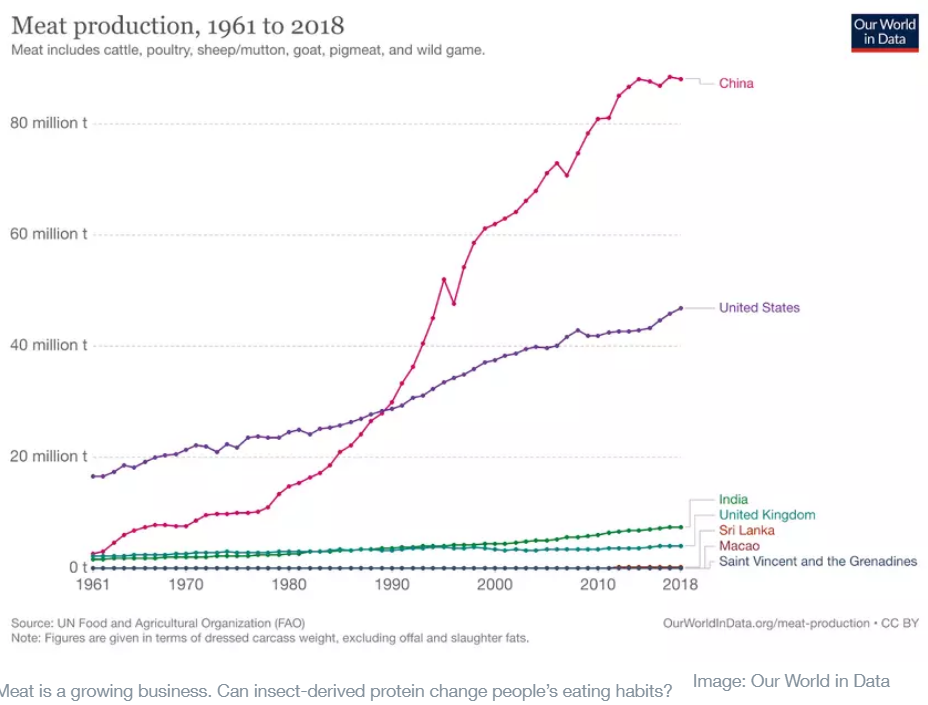Worms for dinner? Europe backs insect-based food in a bid to promote alternative protein
- The European Union just gave the green light to using mealworms in food.
- Edible insects are high in proteins and vitamins.
- They also consume fewer natural resources than livestock.
- But the demand for meat-based protein is set to double by 2050.
Worms are now firmly on the menu in Europe.
The European Union (EU) has ruled that the larval stage of the Tenebrio molitor beetle, the mealworm, is safe for people to eat and it will shortly be on the market as a “novel food”.
EU researchers said that the worms, eaten whole or in powder form, are protein-rich, while the UN Food and Agriculture Organization said that edible insects “contain high-quality protein, vitamins and amino acids for humans”.
Green insects
As well as being a nutritious food source, insects consume fewer resources than traditional livestock. There are, of course, many parts of the world where insects are already part of everyday diets. Industrializing their production and consumption could open up new routes to feeding the world’s growing population and alleviating some of the environmental pressures caused by conventional agriculture.
Ensuring access to safe, healthy sources of food is a key part of the UN’s Sustainable Development Goal (SDG) drive. From zero hunger to climate action, from ending poverty to ensuring responsible use of resources, many of the 17 SDGs relate to the food people eat, how it is grown and how it is distributed.
According to the World Economic Forum’s Meat: The Future report, keeping up with the demand for animal-derived protein could put meeting the SDGs and Paris Climate Agreement targets in jeopardy.
Livestock around the world is responsible for around 14.5% of all greenhouse gas emissions relating to human activity. The need for land – whether for grazing animals or growing crops to feed animals – is “the single greatest driver of deforestation, with major consequences for biodiversity loss,” the paper says.
Production changes
Another approach to closing the protein gap is growing artificial meat and other protein alternatives. Lab-grown meat requires animal stem cells, which are cultured in nutrient-rich material. Protein alternatives, like mycoprotein (which is derived from fungi), are used to create meat-free meals.
Meat production has boomed in the past 50-plus years. According to Our World in Data, in the early 1960s, Europe and North America were the largest meat producing areas, but this has now changed. Asia accounts for around 40-45% of global meat production, while Europe and North America’s share had fallen to 19% and 15%, respectively.

That change reflects broader shifts around eating habits; by 2050, the demand for meat-based protein is expected to double, according to Meat: The Future. “Currently, animal-based protein provides 40% of the world’s protein supply though meat, fish and dairy products such as eggs and milk,” the paper’s authors write.
“However, as meat-based protein (for instance, beef, lamb, pork and chicken) is tasty, protein-rich and energy-dense, it is the preferred or aspirational way for a significant part of the global population to consume protein. Consequently, as the population grows and the world becomes richer and more urbanized, demand for meat-based protein is growing fast.”
https://www.weforum.org/agenda/2021/05/europe-insect-based-food-meat/
Comment: Ah, no thank you – I’ll pass 🙂
